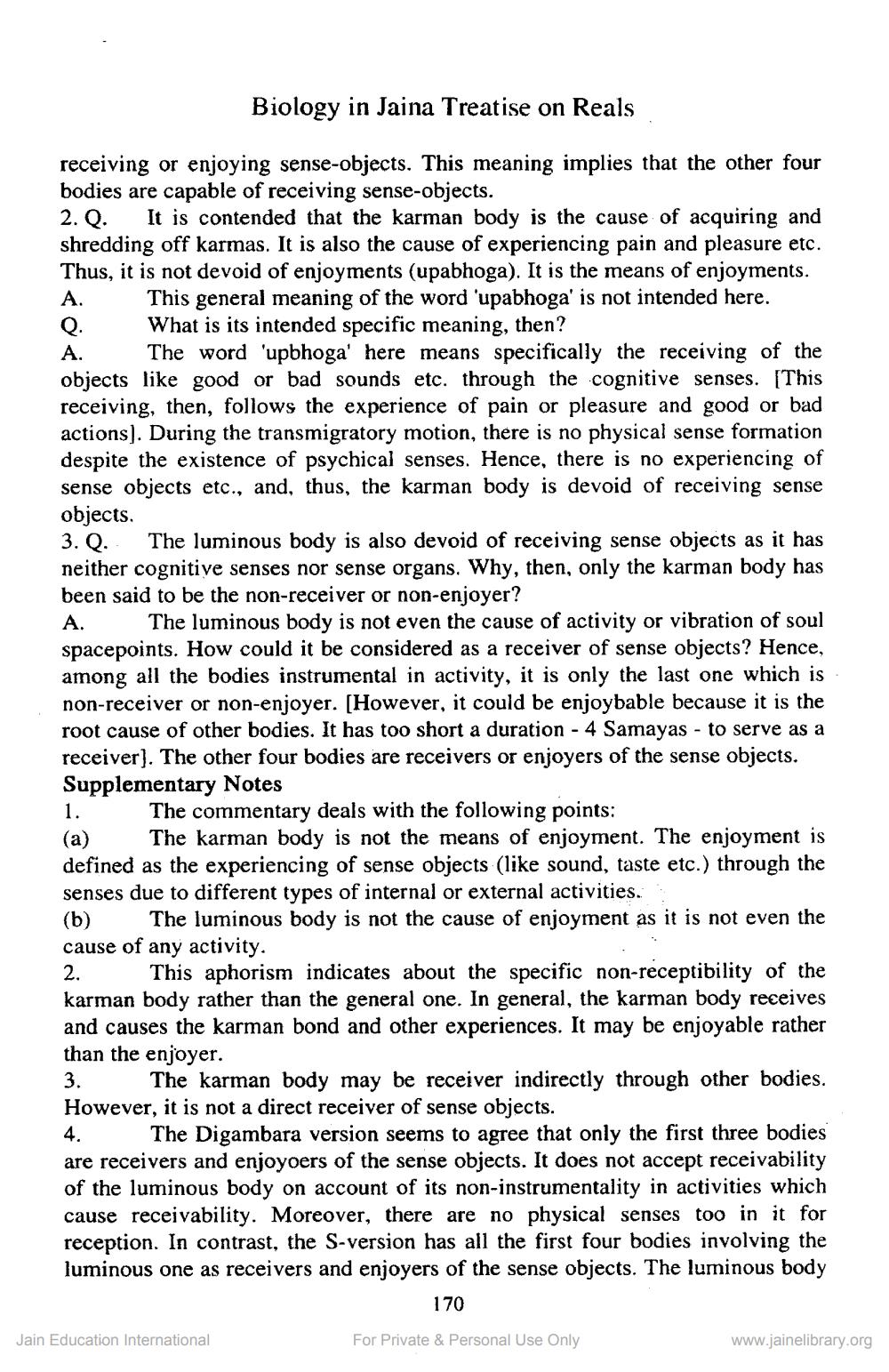________________
Biology in Jaina Treatise on Reals
receiving or enjoying sense-objects. This meaning implies that the other four bodies are capable of receiving sense-objects.
2. Q. It is contended that the karman body is the cause of acquiring and shredding off karmas. It is also the cause of experiencing pain and pleasure etc. Thus, it is not devoid of enjoyments (upabhoga). It is the means of enjoyments. A. This general meaning of the word 'upabhoga' is not intended here. What is its intended specific meaning, then?
Q.
A. The word 'upbhoga' here means specifically the receiving of the objects like good or bad sounds etc. through the cognitive senses. [This receiving, then, follows the experience of pain or pleasure and good or bad actions]. During the transmigratory motion, there is no physical sense formation despite the existence of psychical senses. Hence, there is no experiencing of sense objects etc., and, thus, the karman body is devoid of receiving sense objects. 3. Q. The luminous body is also devoid of receiving sense objects as it has neither cognitive senses nor sense organs. Why, then, only the karman body has been said to be the non-receiver or non-enjoyer?
A.
The luminous body is not even the cause of activity or vibration of soul spacepoints. How could it be considered as a receiver of sense objects? Hence, among all the bodies instrumental in activity, it is only the last one which is non-receiver or non-enjoyer. [However, it could be enjoybable because it is the root cause of other bodies. It has too short a duration - 4 Samayas to serve as a receiver]. The other four bodies are receivers or enjoyers of the sense objects. Supplementary Notes
1.
The commentary deals with the following points:
(a) The karman body is not the means of enjoyment. The enjoyment is defined as the experiencing of sense objects (like sound, taste etc.) through the senses due to different types of internal or external activities. (b) The luminous body is not the cause of enjoyment as it is not even the cause of any activity.
2.
This aphorism indicates about the specific non-receptibility of the karman body rather than the general one. In general, the karman body receives and causes the karman bond and other experiences. It may be enjoyable rather than the enjoyer.
3.
The karman body may be receiver indirectly through other bodies. However, it is not a direct receiver of sense objects.
4.
The Digambara version seems to agree that only the first three bodies are receivers and enjoyoers of the sense objects. It does not accept receivability of the luminous body on account of its non-instrumentality in activities which cause receivability. Moreover, there are no physical senses too in it for reception. In contrast, the S-version has all the first four bodies involving the luminous one as receivers and enjoyers of the sense objects. The luminous body
170
For Private & Personal Use Only
Jain Education International
www.jainelibrary.org




